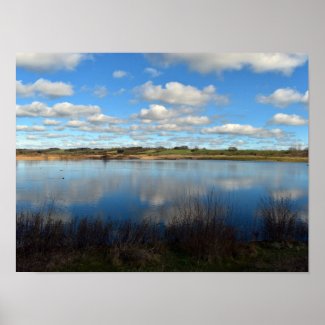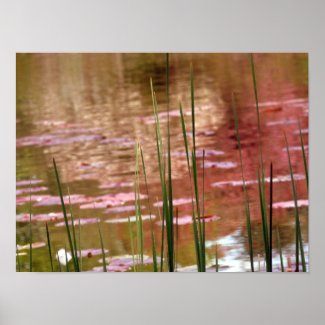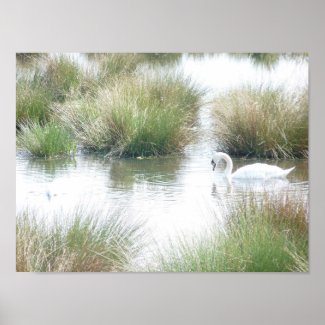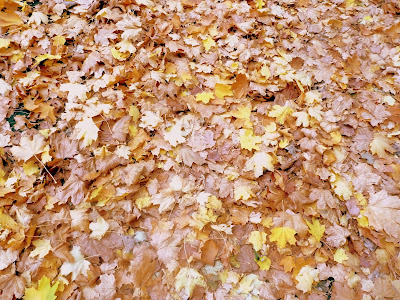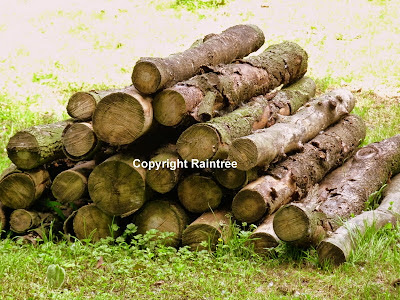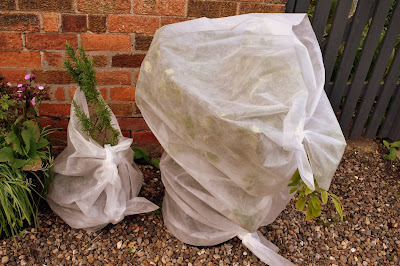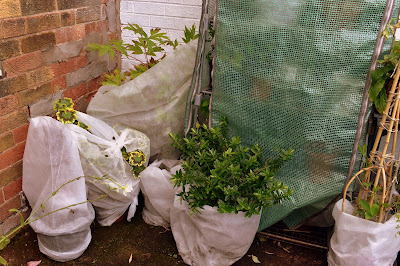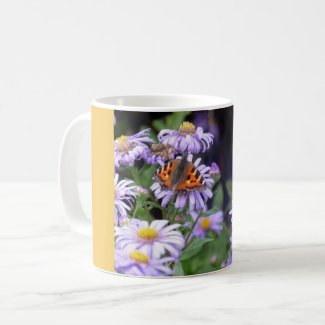Tuesday, April 2, 2024
Reviewing Wellbeing Benefits Of Nature Reserves
Tuesday, January 10, 2023
Animals: Pets & Wildlife Reviewed on Review This Reviews!
Treasures from the Archives of Review This Reviews!
The contributors of Review This Reviews love animals, especially our pets. As families with pets, we have found several fabulous products to make our pet's more comfortable for home or travel. For instance, did you know there are disposable pet bowls? They make traveling with dogs much easier or make the pet sitters life easier because they can simply throw away the food bowls instead of washing them.
For pups that don't like to get wet in the rain, there are doggy rain coats. Or, if your dog needs a hair cut and you don't want to pay a professional doggy hair stylist or your pup just needs a trim between stylist visits, then we recommend this cordless clipper for you.
Click Here for More Dog Related Reviews!
For cats, why not have a lovely end table that doubles as a comfortable cat house? That gives the cat privacy while still being in your protective company. Many cats will run for shelter when company comes in. The cat house gives them that needed place until they are ready to venture out again. With a cat cushion inside, the end table becomes a cat bed too.
Click Here for More Cat Related Reviews!
If you don't have a pet yet, or perhaps want to add to your pet family, you may want to consider a hairless guinea pig. This review shares the things you should know before you decide to bring a guinea pig home.
Of course, none of us wish to think of our beloved pets being lost and unable to find their way home. During the month of July, we celebrate National Lost Pet Prevention Month and focus on learning how to protect our pets and prevent our pets getting lost.
Wildlife Around Us
Several of the Review This Reviews Contributors enjoy exploring the great outdoors and taking pictures of the wildlife. That leads us to doing research on the animal and writing a review on the wildlife we found interesting or pretty enough to photograph.
Monday, March 7, 2022
Book Review: Bringing Nature Home: How You Can Sustain Wildlife with Native Plants
People who know me, know that I am interested in learning more about maintaining my land in a way that is helpful to wildlife and this includes educating myself about invasive species and how they harm my land. That is why when I received Bringing Nature Home: How You Can Sustain Wildlife with Native Plants as a goodbye gift when I moved, I was thrilled. This book hits the mark in so many ways.
Bringing Nature Home: How You Can Sustain Wildlife with Native Plants written by Douglas W. Tallamy
My copy of Bringing Nature Home: How You Can Sustain Wildlife with Native Plants is a 15th printing and was updated and expanded in 2009. The first edition was published in 2007. Why had I not previously known about this important book?!
"Bringing Nature Home is a book many of us have been waiting for. So much more than a push for native plants, it articulates the broad interdependency of living relationships and literally redefines gardens as the new Nature" - Foreword by Rick Dark.
It is the attention to detail related to how everything is interdependent and the ability of the author to describe everything in a helpful way for us regular folks that makes this book so beautiful. For example, by now many of us know that the Monarch Butterfly is dependent on the milkweed for survival. So many of us, myself included, either plant milkweed plants or help disperse and plant the seeds from the milkweed pods in areas where the plant is present. However, what I only learned through this book is that butterflies need both a "host" plant and a "nectar" plant. One plant for reproducing and one plant for feeding. Fortunately, the milkweed does both for Monarch Butterflies. However, people like me mistakenly believe that popular plants, such as the Butterfly Bush, is another must-have plant for sustaining butterflies. Unfortunately, we sometimes choose the wrong type (or combination) of plants and do more harm than good.
"When designing a butterfly garden, you need two types of plants . . . Most people only focus on the plants that produce nectar. Even worse, they often turn to alien plants that are promoted as being good for butterflies, the most popular of which, hands down, is the butterfly bush (Buddleja species). . . . but not one species of butterfly in North America can use buddleias as larval host plants."
Well, who knew? I sure didn't! I am thankful to have this knowledge now. I may still plant Buddleias on my land but cautiously and with a focus on ensuring that I have plenty of other nectar AND host plants in order to provide a complete habitat. According to the author, when we do not provide this complete habitat, we sometimes do more damage than good. And in this example, end up with a lower butterfly population.
While chapter one is "Restoring Natives to Suburbia: A Call to Action" and chapter two is "The Vital New Role of the Suburban Garden" the information contained in this book is relevant to all sizes of lots and land. Even my rugged ridge-top acreage in West Virginia. In fact, this book includes information about 2 trees I am interested in that others sometimes have never heard of: Paw Paw and American Chestnut. This book also mentions many of the alien (non-native) species I am dealing with on my land: Autumn Olive and Mile-a-minute to name just two. Interestingly enough, Autumn Olive was planted as a way to assist birds. In the long run, it became an invasive plant that - like some butterfly plants - provides some food but no other habitat (host) value.
Mr. Tallamy does a most excellent job of teaching the reader about the importance of native plants. And how those native plants support birds, butterflies, and the environment as a whole. He doesn't avoid the tough questions about non-native plants, rather he includes an entire chapter of "Answers to Tough Questions".
If you have any desire to learn about landscaping and providing a yard that better sustains wildlife, this book is absolutely the place to begin.
My Personal Stance Regarding My Responsibility to the Natural World Around Me
I am a bit sad that I had not heard of this book until it was gifted to me at the end of last year but am thrilled that I have it now. Truthfully, I have not read the entire book cover-to-cover. It is so packed full of information that I have read certain sections, and have returned to read those sections again (i.e. the section about Milkweeds and Monarchs and the section about American Chestnuts). This will be a reference book that I refer to again and again over time. Especially Appendix One, "Native Plants with Wildlife Value and Desirable Landscaping Attributes by Region" and Appendix Two, "Host Plants of Butterflies and Showy Moths".
I have a strong desire to be a good steward of my land and to provide a helpful habitat to the birds, butterflies, and wildlife in the area - while eventually having a place that is as useful to humans (i.e. homesteading with a garden and chickens). I also have a strong desire to leave the world - not just my land - a better place than I found it.
To be completely honest, I feel there is far too much lip-service given to environmental issues and very little real action. The phenomenon of the most vocal environmentalists physically doing little to help the environment (while often making personal decisions that are harmful) astounds me. I could list the things that irk me related to this topic, but I'm not sure I am able to write it in a way that conveys my intent and that is ultimately productive. So I'll just say: if you are concerned about the environment, demonstrate that concern. Begin at home and in your community.
The first big step is education. Mr. Tallamy does an excellent job of educating and explaining. I don't feel that he is lecturing or berating, rather he is encouraging. He turns a world-wide problem into small bite-sized chunks.
The second step is for more of us to do something. I may only have 4 acres surrounded by hundreds of acres that aren't being cared for. But I can do something real on my little bit of land. Something that is meaningful.
I am not as articulate as Mr. Tallamy so I will end with an important question and answer from his book (edited for length - please read his entire answer if you are able):
Q: My house sits on an eighth of an acre. Is that enough land to make a difference if I use natives instead of aliens?
"Your small plot is connected to other plots, which are connected to others and others and others. Collectively, they are North America. Changing the plant base of all of suburbia is quite an undertaking, but all you have to worry about is your eighth of an acre."
"If we humans are capable of [ruining] hundreds of millions of acres . . .we are also capable of returning natives to our gardens"
Thank You
Finally, I am so thankful for the science teacher/co-worker/friend who gifted me this wonderful book. You demonstrate your concern for the earth (and students, and co-workers, and all who cross your path) on a daily basis. You are a wonderful role model in so many ways. And you have enabled me to make more informed decisions on my land that will help sustain the wonderful wildlife of West Virginia.
Tuesday, January 25, 2022
Why Insect Hotels Are Good For Wildlife And Gardeners Reviewed
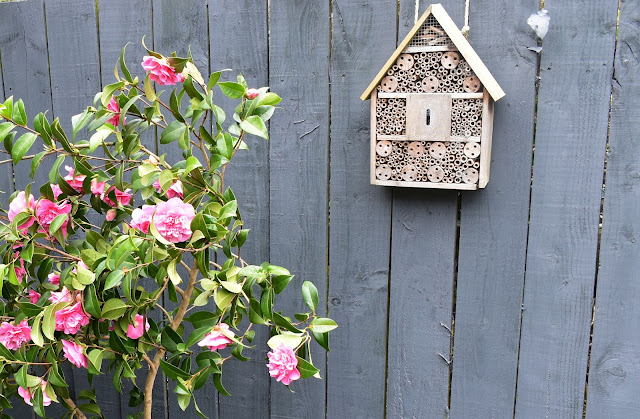 |
| Insect Hotel |
Insect Hotels can be bought or handmade and are both equally effective. When you have a bug house you are aiming to attract all manner of insects and wildlife to gain a balance of insects in your garden which is vital if you are aiming to have a harmonious wildlife garden.
Insect Hotels Benefits To The Garden
Having an Insect Hotel in the garden is not entirely altruistic. The aim of any wildlife gardener is to use no pesticides, fungicides, or herbicides at all.
These chemicals kill "pests" and beneficial insects equally in most cases and are not good for wildlife.
For the gardener, an insect hotel can attract all manner of bugs and many predators that will help us to keep a good balance in the garden thus eliminating the need to use pesticides.
 |
| Bee on Daffodil |
In the early days of converting a normal garden to a wildlife pesticide-free garden, this can take some nerve. A garden needs a natural balance of predator and prey.
If you or a previous garden have been using chemicals then stop, undoubtedly in the first year or so you will see greenfly and blackfly and all manner of pests eating our plants. This is because your garden became unbalanced. It is now for us to redress this balance and installing insect houses is one easy step.
However, if we want a wildlife friendly garden we must resist the urge to use chemicals. Instead, we must attract the beneficial insects, spiders and predators to our gardens who will easily and quickly dispatch those pests eating our plants.
A great way to do this especially in the early days is to have an Insect Hotel or several bughouses. Provide insects shelter and a food source and they will arrive.
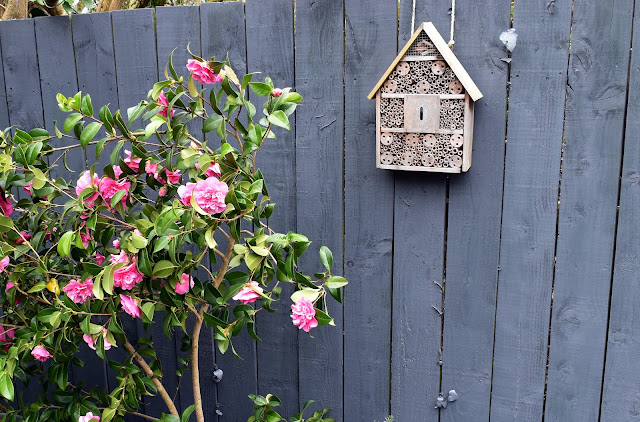 |
| Insect Hotel In Garden |
Personally in the first two years of taking on this garden, I simply did not grow plants I knew would be susceptible to aphid attack. The previous gardeners had used chemicals and had a very non-wildlife friendly garden, so I knew once I stopped all chemical use I would face some difficulties.
It took a year or two to fully balance the garden again. I was lucky as my neighbours also stopped using chemicals which helps a lot as wildlife do not know about boundaries. It was so worth it as since then I have not had to spend any money on insect prevention, the predators do it all for me free of charge night and day!
In this article, we will mainly talk about insect houses with a mention and further resources to our ground-dwelling beneficial creatures need as well.
Location Of an Insect Hotel.
A Bughouse or Insect Hotel is best located in a warm undisturbed spot in your garden. For insects, it is important it is in a fairly dry area so under the house or shed eaves, in a tree or against a sunny fence.
Some may be a thing of beauty or they may be something you wish to hide from full view. Either way, it does not matter to the bugs as long as they can go about their business undisturbed. We like the look of ours so we do not make any particular effort to hide them.
Who Lives in an Insect Hotel?
 |
| Close Up Of Insect Hotel |
Generally, you can expect a variety of insects such as ladybirds and woodlice. You will get spiders of course and hopefully bees or maybe wasps.
These are all beneficial creatures to your garden. These creatures need a place to shelter, raise their young and keep themselves and their young hidden from predators.
You can of course just put up your insect hotel and forget about it, but It can be good fun to carefully observe your insect hotel to see who has taken up residence.
Types of Wildlife Hotels.
It is better to have several insect-specific bughouses around the garden in suitable locations than one great big multi-bug house.
The idea is that each will be more suitable for one species than another. Of course, there is no way of knowing who will decide to take up residence!
The rationale is that different species require different approaches. For example, a home to attract bees requires a warm sunny dry location. Ideally, it should face south or as near south as possible and the area in front of it would be clear of vegetation. It is important to be a few feet off the ground and secured strongly to a wall, tree or fence. You can buy Bug Houses that hang up with wire or string, some that need nailing up an other Insect Houses with Stakes that can be put into the ground. Ideally a variety of these in the garden is best.
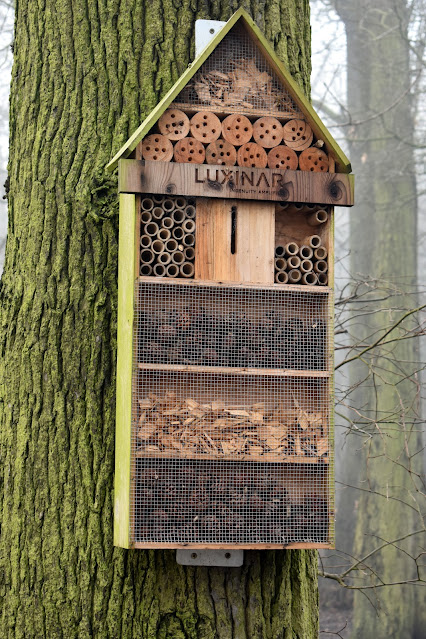 |
| Insect Hotel In The Woods |
Spiders are happy in a site with more cover where they can spin webs between tree branches and the insect hotel but in my experience, they are not too fussy.
In addition, while you are siting your bug houses spare a thought for ground dwelling creatures like hedgehogs who are also very beneficial to our gardens.
Hedgehogs are a species in serious decline. A lovely pile of wood and leaves in an undisturbed corner of the garden will go a long way towards helping these enchanting and ancient creatures. If you would like to take it a step further you can purchase a special house for them known as a Hogitat. Please read more about How To Help Hedgehogs In Your Garden
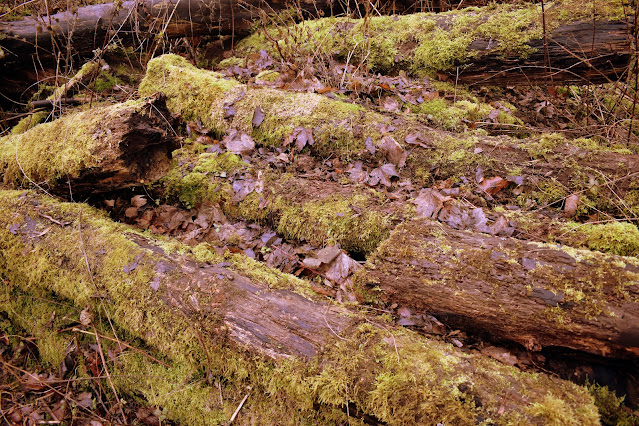 |
| Well Established Wood Pile |
If you are wanting to attract frogs and toads they will love a warm wet, damp environment in a shady spot down on the ground.
You can start a wildlife hotel at any time though you may be more successful if you put one up in early Spring or Autumn/Fall.
Materials For An Insect, Bee Or Spider Hotel.
Ideally, you will have a bug house made of natural materials. The wood is best untreated with no paint or preservatives as that will only deter and harm insects.
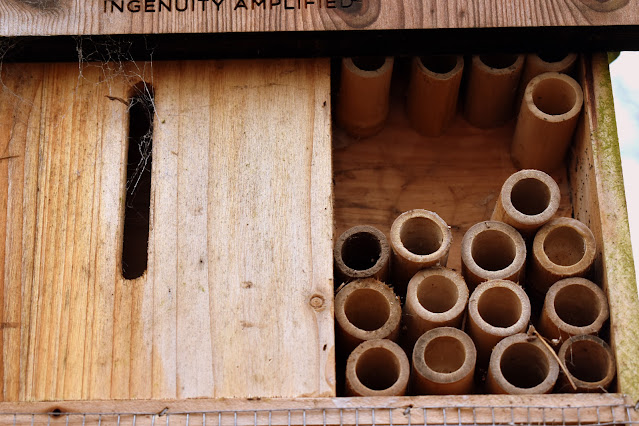 |
| Wooden tubes for insects in Bug House |
The structure needs to be strong and solid with a sloping and wide roof to keep the rain out.
If you are buying a bug house with pre-drilled holes in the wood they should be smooth and if doing it yourself make sure there are no splinters.
Think about the types of creatures or insects you want to attract and the habitat they require.
 |
| Wood shavings for insects in bug hotel |
Looking After An Insect Hotel.
During this time it is recommended to clean it out at the end of each summer to remove any dead cells or insects and replace any worn-out sections. That is all that is really needed.
Insect Houses Are A Learning Opportunity For Children
Bug houses are a great learning experience. It is also a wonderful fun and educational opportunity for children to learn about and appreciate the natural world.
In a small wood near a busy residential area, primary school children have made insect houses to site all over the wood to help the local wildlife and they take great pride in their creations and interest in the inhabitants.
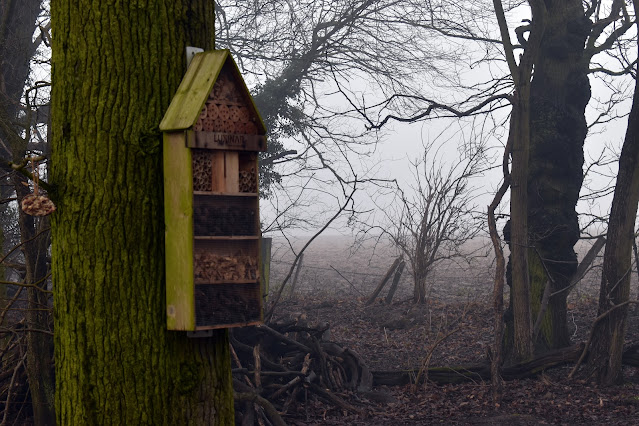 |
| Bug Hotel In The Woods Good For Winter Shelter |
In our garden, we have a dry insect house 3 feet off the ground on a sunny fence, a log pile in a shady but warm corner to attract hedgehogs and in a corner near the garage a large saucer of water with dense habitat around it to attract frogs and toads. The spiders seem to make their home in many of these locations as well.
Having a bug hotel or two and making a habitat for wildlife is very enriching in our gardens and our lives.
Insect houses take up very little room, so most people could have an insect house in an outdoor space. The end result of all this care is a garden that is filled with the sound and sights of beautiful insects.
Yes, we do still get greenfly and blackfly, but predator insects soon become aware of them and keep the numbers down or even eradicate them for me. We do perhaps have to accept some level of pest attack on our plants but when you achieve that crucial balance it becomes less of a problem.
I am certainly prepared to have some plant damage to know that I am not killing all insects indiscriminately. Chemicals kill both "pests" and beneficial insects.
I once had a houseplant that became invested with a type of whitefly, so as it was summer I put it outside during the day for a few days and the wasps ate all the flies for me and the plant survived.
Other insects like this gorgeous butterfly happily live in the garden now going about their daily lives and bring me a lot of joy.
 |
| Beautiful Butterfly In Summer |
People often think about the beautiful more visible wildlife like birds, but it all really begins with the small perhaps less beautiful or more scary insects. If we take more care of them they will help our gardens be more healthy and we will certainly see more birds and other gorgeous wildlife as well.
Without our negative influence of chemicals, over time the garden adopts an easy give and take, ebb and flow of natural processes and our plants and us benefit from that.
There are many useful and fun things you can do for wildlife in our own garden spaces, having a few insect hotels is a great start.
More Wildlife And Gardening Articles
6 Ways To Help Wildlife In The Year Ahead
Spring Woodland Walks For Wellbeing Reviewed
Diary Of A Wild Country Garden
Essential Wildlife Gardening Gifts
Gardening And Wildlife Articles On Review This Reviews
Tuesday, November 16, 2021
Reviewing How To Put The Garden To Bed For Winter
During late October and early November, I start putting the garden to bed. I like that expression, it makes me feel like I am doing my last caring duties for our garden this year and then the garden and myself can rest in the long cold dark days of winter.
Of course, there will always be jobs to do all year round. I do need to prune the climbing roses and I need to do a little hedge cutting later on, but the bulk of the autumn work in our garden is over and the best thing I can do now is to enjoy the autumn colors of the trees and plants still flowering or bearing berries and then let it rest.
What Is Putting The Garden To Bed?
Well for us it is to make sure that the plants in the garden can survive a winter full of winds, gales, heavy rain and snow.
Protect Plants From Wind Damage
I need to make sure that plants are not too damaged by high winds. So for example we have several lovely Buddleia and Lavataria.
All summer they have given us beautiful flowers and attracted many bees and butterflies. They all grow very tall so are at risk of wind rock and breaking branches. So about October, I reduce their height using loppers by about half. This prevents any issues and still gives a decent size plant at about 4 feet high. In Spring I will prune the Buddleia to about a foot high but this autumn prune is simply to prevent damage.
I repeat this with any other shrubs or plants that may be in danger. For this, depending on the thickness of growth you may use loppers or shears or these Wolf ByPass Secateurs
However, never prune Spring flowering plants now or you will not have any flowers next year. Also, it is too late to prune lavender now as any tender new growth may be frost-damaged.
Care Of The Grass In Winter
The last cut here will be around the end of October. We tend to leave the grass a little longer over winter but it is a personal thing. We use a manual lawnmower which suits our small lawn and us very well. If you are considering a new lawnmower here is my review of the Benefits And Drawbacks Of A Manual Lawnmower.
It is useful to do autumn spiking of the lawn with a fork or special tool then brush grit into the holes to help with drainage. If you feel the lawn needs feeding now is the time to give it an autumn feed.
The other main thing to do is to keep off the grass if you can when it is sodden with rain. Walking on it too much will cause damage.
Uses Of Autumn Leaves
Gather fallen leaves into a wire netting bin or wooden bin or in bags with holes punched in for drainage, water well and leave to rot down so you can have lovely free leaf mold this time next year!
Add a layer of mulch to your borders. A thick layer of leaves or compost will enrich the soil and make it a great habitat for worms and other beneficial insects that love to live in the soil.
Here Are More Details On The Joys And Uses Of Autumn Leaves
Make A Wildlife Habitat This Autumn
One of the best things we can do this Autumn/Fall is to make more habitat for wildlife in our gardens. Anything we need to cut down do not throw away but make into a big pile in a quiet corner of the garden. I aim for as little as possible to leave the garden, rather to recycle it within the garden.
This pile of logs, leaves, sticks will make a great winter retreat for insects, spiders, hedgehogs and all manner of overwintering creatures.
In turn, they will make your garden a healthier more balanced place for predators and prey and nature to work is magic.
Fleecing Tender Plants In Autumn
One of the main tasks we do is to buy a great roll of fleece and proceed to wrap up all the tender of more delicate plants. We do not have a large greenhouse so they all have to stay outdoors and most would not survive a winter left to fend for themselves.
If you do have a greenhouse then it is easy to just move all your tender plants in for the winter.
However, I have found that a thick protective covering of fleece works really well. All I need to do then is to brush any snow off it.
So each plant and most of these tender plants are in pots receives a cosy wrapping of fleece all the way around the pot base and the foliage. I leave the top open for if its a nice day but with enough material so I can close it right over if the weather is brutal.
For many of the plants, I am most worried about the roots. If the foliage dies down or gets wind burnt it will usually grow back if the roots are strong.
However, if the roots become frost-bound or starved of oxygen the plant will die. So especially for plants in pots, it is vital to protect the roots if nothing else.
Ideally and especially for terracotta pots, you would first wrap the pot in bubble wrap or hessian then wrap the fleece over it and the foliage. If you do not have bubble wrap then use fleece over all of it.
For plants that really do not like our winters such as our beautiful Bottle Brush Plant I fleece them and also bring them into our sheltered porch.
Do buy the thicker fleece if you can. I have tried different fleeces and the thinner ones tear too easily and I usually have to double wrap the plant to feel it is protected.
With the thicker fleece, although slightly more expensive you only need to single wrap and so far I have not had any trouble with tearing.
Move Tender Plants to A Sheltered Spot
After all the tender pants are fleeced up I move them to their winter homes.
This is a place where they are kept as safe from high winds and cold as possible so against a house wall is good. Our Tree Peony in particular hates strong winds. I group them together so that they get shelter from each other.
As I do this before Halloween it has to be said that when all wrapped up our plants do look somewhat like cute little ghosts especially after dark and particularly when my husband decides to elaborate by putting black netting, lights or eyes and ghostly additions !!! The neighbourhood children do love it though!
Care of Herbaceous Perennials
For herbaceous perennials, the best thing you can do in autumn is nothing at all!
It used to be the time to tidy up all the herbaceous perennials, cutting them down and generally tidying them up.
However, we now know that many insects use these plants to overwinter in their stems and foliage. For them, our untidy garden is a warm safe home. In order for nature to survive and thrive there is a worry that Are We Too Tidy In Our Gardens?
So for the good of nature and to relieve us of a task, we now need to do nothing. When new growth starts in the spring and the insects are no longer needing their warm homes and shelter and protection we can then cut back the old growth.
Protection of Tender And New Cuttings Over Winter
Any tender and new cuttings I took are in small pots and I move all these into our little greenhouse on the patio for winter. It has a cover I can take off if the weather is reasonable and put down when it is cold or particularly windy.
It is not heated and does not need to be, it just keeps the worst of the weather off the new cuttings and keeps them mostly free from frost. If I did not have this I would use a cold frame or even cover them all with fleece.
General Care Of The Garden In Winter
So when we have completed all these tasks it is so lovely to know that all our precious plants are warm and cosy and ready to rest through the winter.
I will of course need to periodically check them over to see that they are doing well. On sunny days I will uncover some of the less tender ones so they get some sunshine and remain hardy.
If it snows heavily I will brush off the worst from the plants. Other than that I do not need to concern myself with them.
Then all we gardeners need to do is to sit down with a lovely mug of whatever you like, put your feet up, enjoy the beautiful autumn sights in the garden. Perhaps take a moment to drink in the beauty of your own autumn garden, window box, or patio and in nature and start dreaming of and planning for spring!
Take The Time to Stop Look and Listen In Your Garden
More Gardening Reviews From Contributors On Review This Reviews
Wednesday, March 3, 2021
Too Early to Plant, So Take a Trip Through a Garden Instead!
March has arrived! It's too early to plant, so take a nice trip through the outback of Australia with this memorable book reviewed here!
Most Recent Reviews on Review This Reviews
Search for Reviews by Subject, Author or Title
The Review This Reviews Contributors
 Sylvestermouse
Sylvestermouse Dawn Rae B
Dawn Rae B MbgPhoto
MbgPhoto Brite-Ideas
Brite-Ideas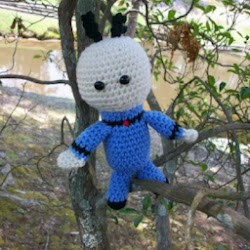 Wednesday Elf
Wednesday Elf Olivia Morris
Olivia Morris Treasures by Brenda
Treasures by Brenda The Savvy Age
The Savvy Age Margaret Schindel
Margaret Schindel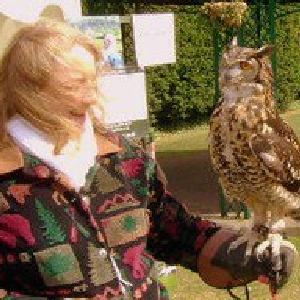 Raintree Annie
Raintree Annie Lou16
Lou16 Sam Monaco
Sam Monaco
 Renaissance Woman
Renaissance Woman BarbRad
BarbRad Bev Owens
Bev Owens BuckHawk
BuckHawk Decorating for Events
Decorating for Events Heather426
Heather426 Coletta Teske
Coletta Teske MissMerFaery
MissMerFaery Mickie_G
Mickie_G
Review This Reviews is Dedicated to the Memory of Our Beloved Friend and Fellow Contributor
We may be apart, but
You Are Not Forgotten




